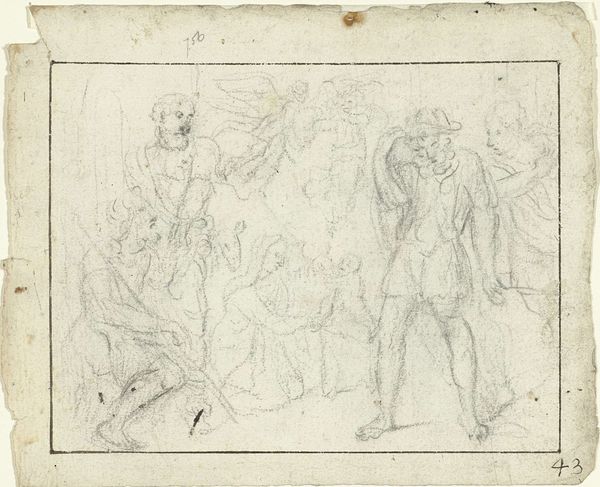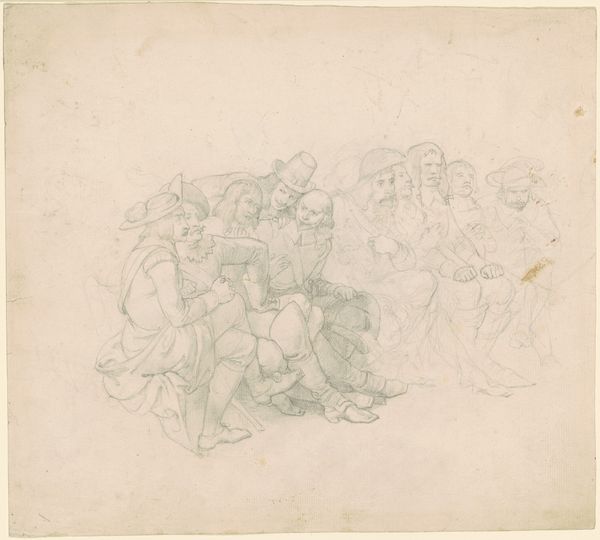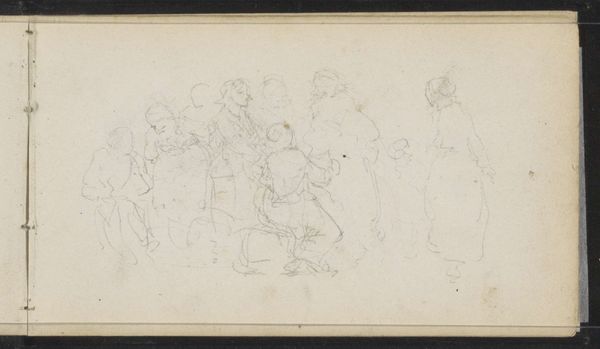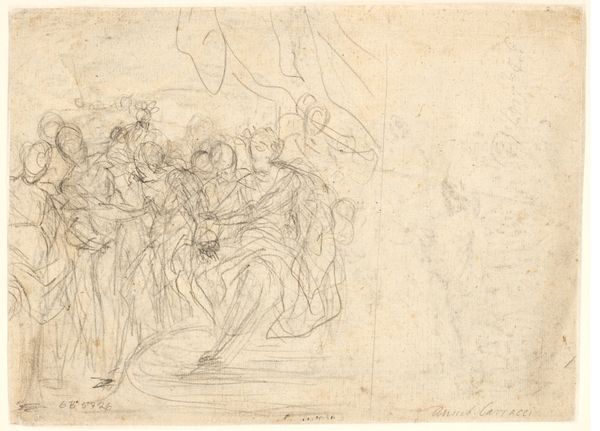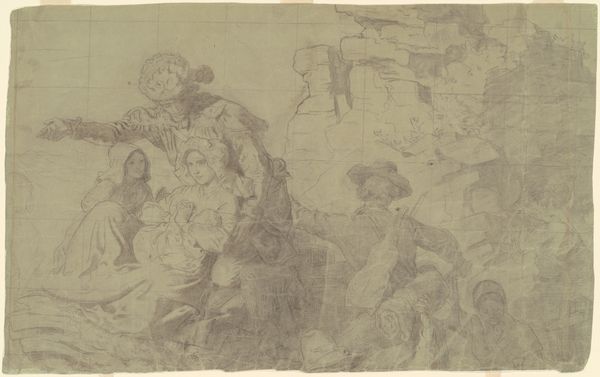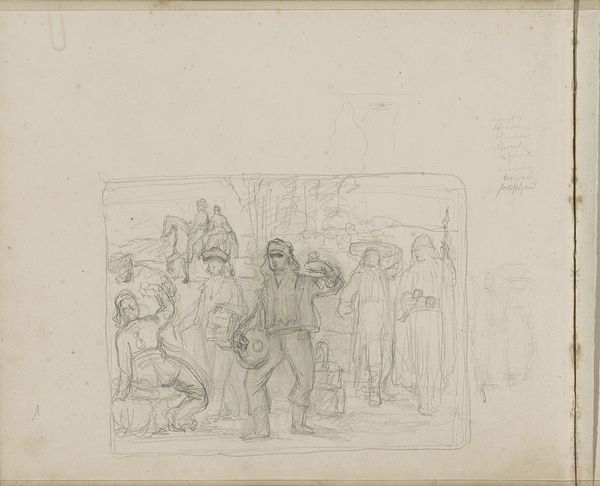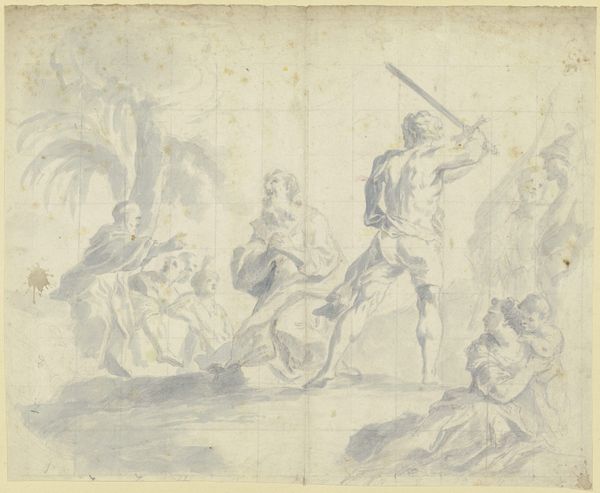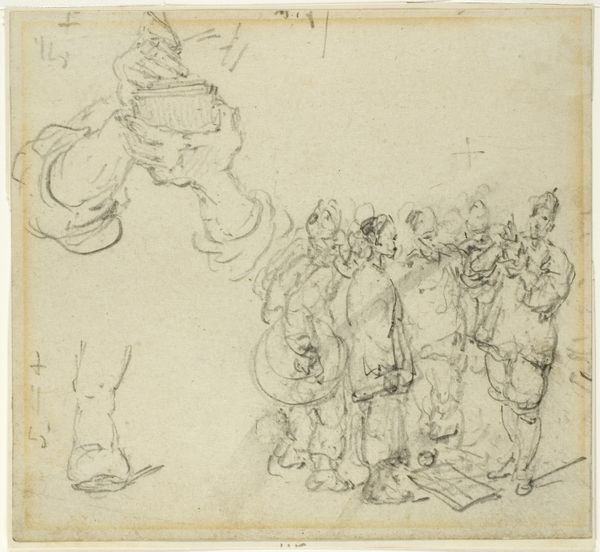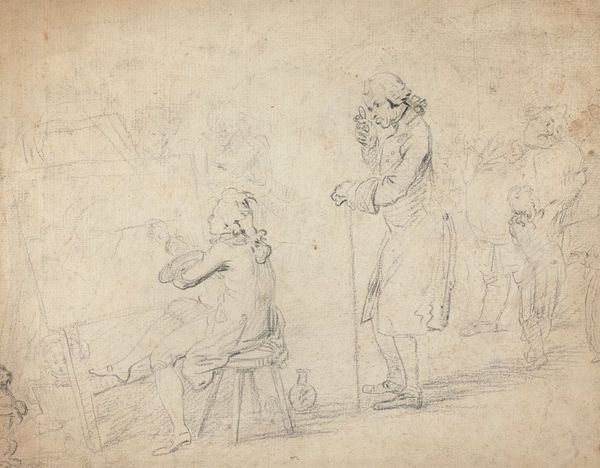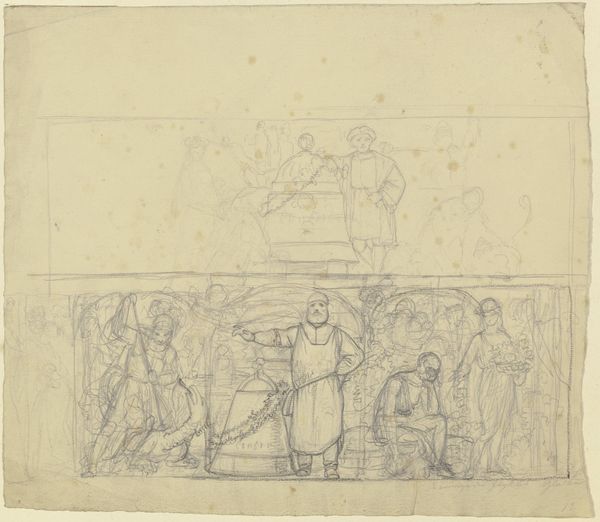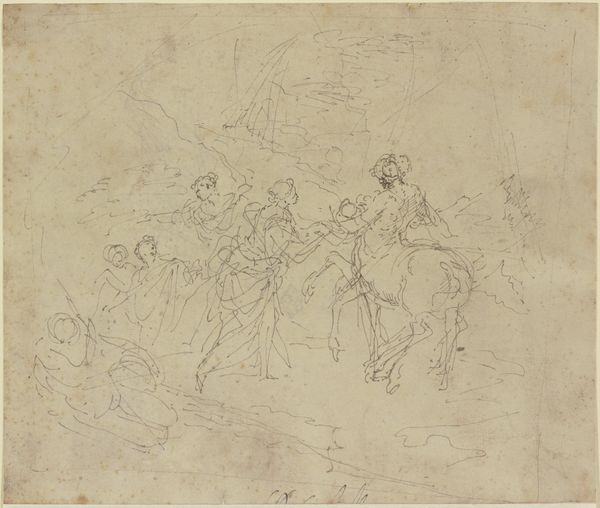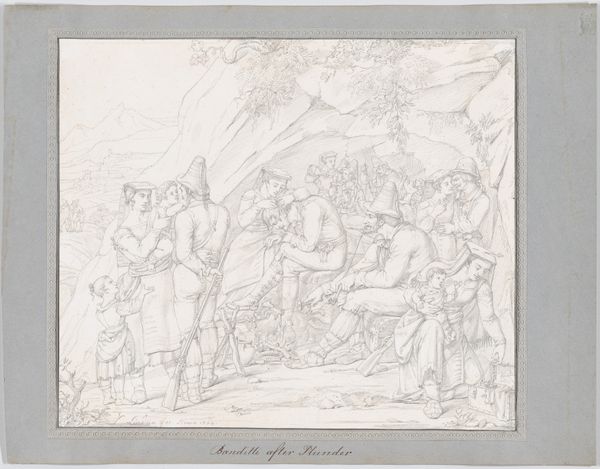![Two Cavaliers [recto] by Emanuel Leutze](/_next/image?url=https%3A%2F%2Fd2w8kbdekdi1gv.cloudfront.net%2FeyJidWNrZXQiOiAiYXJ0ZXJhLWltYWdlcy1idWNrZXQiLCAia2V5IjogImFydHdvcmtzLzBlYzE5YjUwLTBmNmQtNDc3MS04MWNhLTU2NTEzNDc4MjI0YS8wZWMxOWI1MC0wZjZkLTQ3NzEtODFjYS01NjUxMzQ3ODIyNGFfZnVsbC5qcGciLCAiZWRpdHMiOiB7InJlc2l6ZSI6IHsid2lkdGgiOiAxOTIwLCAiaGVpZ2h0IjogMTkyMCwgImZpdCI6ICJpbnNpZGUifX19&w=3840&q=75)
Dimensions: sheet: 20.96 × 26.04 cm (8 1/4 × 10 1/4 in.)
Copyright: National Gallery of Art: CC0 1.0
Curator: This wispy drawing offers an intriguing glimpse into Emanuel Leutze's artistic process. Created around the 1850s, "Two Cavaliers" seems to be a quick sketch rendered in pencil. What is your immediate response to it? Editor: Well, it feels...fragile, almost ethereal. The light pencil work and toned paper lend it a dreamlike quality, a fleeting moment captured on the page. There is an improvisational aspect to this composition, yet the central figures are surprisingly refined. Curator: Precisely. Leutze was a prominent figure in 19th-century American art, deeply engaged with themes of nationhood and revolution. Examining his preparatory sketches like this can reveal how his sociopolitical views influence the creation of his images, or if they are, in fact, intentionally devoid of any overt symbolic content. Editor: I see what you mean, there are echoes of masculinity, power and perhaps even subtle hints of social hierarchy encoded within this seemingly innocent drawing, through the intentional contrast in their attire and stances. These are powerful and loaded depictions. Curator: Definitely. We should consider the influence of romanticism at this time in which personal experiences and individual freedoms and political viewpoints found an outlet in painting and sculpture. As an émigré from Germany, settling in America and being drawn to depicting themes from the American Revolution, could he, perhaps, be re-visiting similar historical power struggles in Europe through art? Editor: That's a powerful point, linking his own background and the era’s ideologies to his artistic choices. Furthermore, I am compelled by the implied setting within the sketch. A stage, a tavern? What conversations, what power dynamics might have influenced Leutze when rendering the drawing. Curator: Leutze skillfully balances the raw immediacy of the sketch with an intellectual narrative of social order. It gives insight to an artist who is testing the waters when depicting politically and historically aware pieces of art. Editor: Looking at "Two Cavaliers" now, I’m reminded that even what appears spontaneous contains deliberate decisions about how identity and narrative is presented, in subtle, but effective visual language. Curator: Indeed. This work reminds us of art's power to both reflect and shape historical and cultural narratives, so succinctly rendered.
Comments
No comments
Be the first to comment and join the conversation on the ultimate creative platform.
